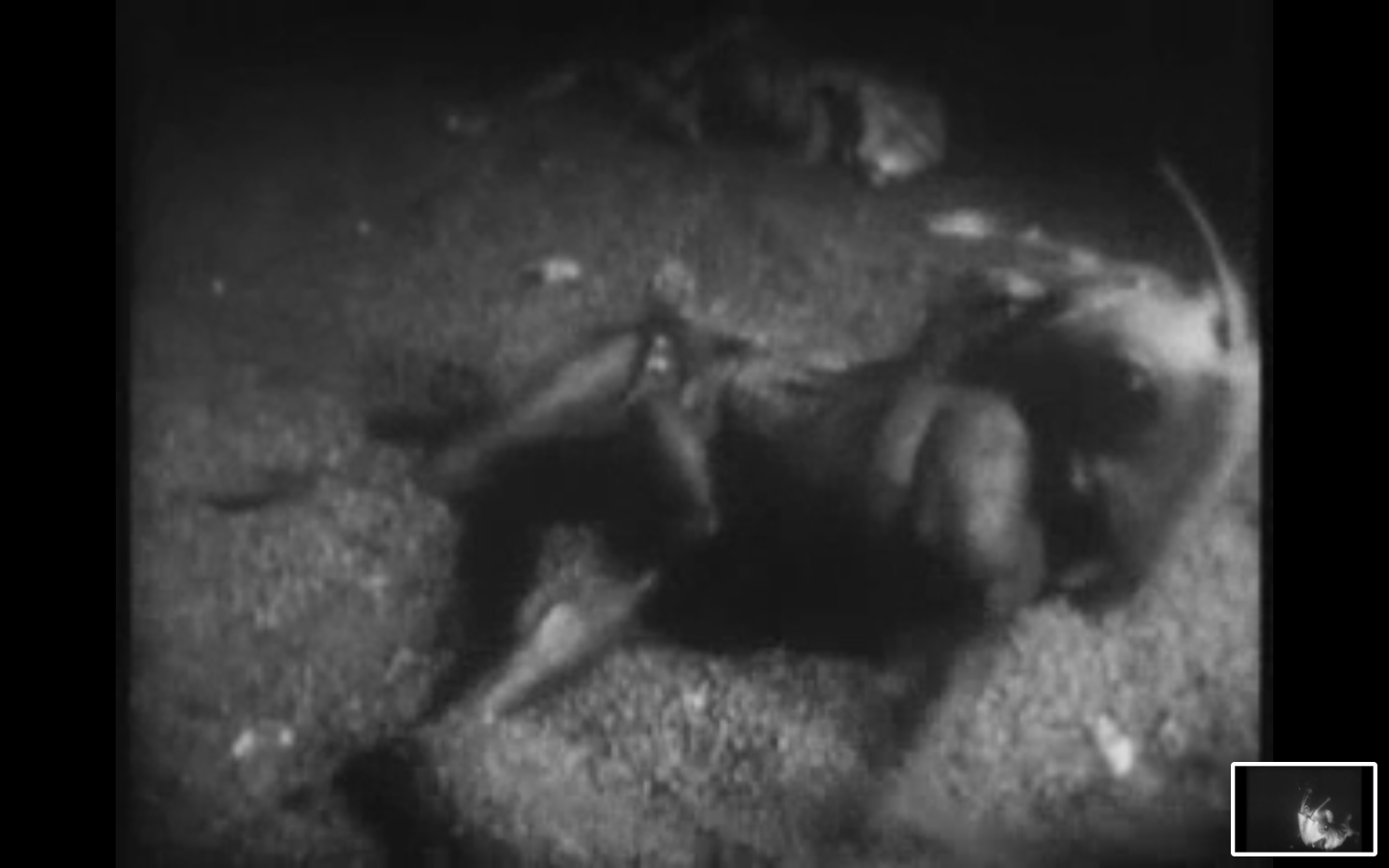“But I am apt to use my books at any time,” I explain to the salesman. “I never can tell when it is coming on me. And when I want a book I want it quickly. I don’t want to have to send down to the office for the key, and I don’t want to have to manipulate any trick ball-bearings and open up a case as if I were getting cream-puffs out for a customer. I want a bookcase for books and not books for a bookcase.”
– Robert Benchley
Month: November 2019
Myriad Mystical Melancholic Marathon Mindless Meaningless Meetings
There are meetings and then there are more meetings. There are meetings after meetings and there are meetings before meetings. There are meetings in the office, and there are meetings in conference rooms, sometimes in the cafeteria. There are online meetings, there are face-to-face meetings. There are app-based meetings, there are audio meetings, there are video meetings. There is a plethora of meetings. Sometimes my entire working day was lost in shuffling my mind and shuttling my body between meetings. Many times I think just attending meetings is the work, perhaps the only work, that people do. Some people take meetings with almost religious fervour in both quantity and quality. For me, any meeting which lasts more than 15-20 minutes, unless meeting exceptional people or under exceptional circumstances, is just plain debauchery full of verbal diarrhea. Meetings should be precise and to the point, and should not devolve into a seemingly unending saga like a TV Soap opera.
But then, people don’t believe in short meetings. They want elaborate, longer meetings. Mind you I have nothing against longer formats, I would rather read a long-form essay than a character restricted tweet. But these meetings suck the very life out of you as they progress. I could never explain that feeling of uneasiness that crept over me whenever I have to attend the glorious meetings which go on for 2 hours and some more. Longer meetings are like their contents like a gas, nothing concrete.
meetings will expand to fill whatever time is given to them. – Prof. Hall
I would always see others attending the same meeting in the same room, for the same time but never seeing them bored even a zilch. If anything, their enthusiasm for the meeting (whatever the topic) seems to go on and on, as if they had a Duracell battery inside them, and me has just an ordinary battery which runs out of juice in between the race, with the finish line seemingly lying beyond the horizon.

Do these people drink Boost? Is that the secret of their energy? I have to know this…
But sometimes during these marathon meetings, I have managed to get some creative things done, insulating and isolating myself from the chaos and debris. The important word to note is “sometimes”. Most of the time I was bored to death, thinking about existential questions about life, the universe and everything. But instead of loaded questions like “”What is life about?”” I end up asking much mundane (and cheap) ones like “What is this meeting about?, instead of “What is my purpose in life?”, I ask “What is the update I have to give?” At times I had to give the same updates in three different meetings in a single week. And then people want to talk about optimisation and time-saving techniques and how we can become more efficient, of course in a meeting.
During such moments of philosophical delirium, I take solace in thinking about this quote from Alice in Wonderland:
“ In that direction,” the Cat said, waving its right paw round, “ lives a Hatter : and in that direction,” waving the other paw, “ lives a March Hare. Visit either you like: they’re both mad.”
“ But I don’t want to go among mad people,” Alice remarked.
“ Oh, you can’t help that,” said the Cat : “ we’re all mad here. I’m mad. You’re mad.”
“ How do you know I’m mad ? ” said Alice.
“ You must be,” said the Cat, “ or you wouldn’t have come here.”
Of course, why would I go to a boring meeting which gives me both suicidal and mass-murderous thoughts at the same time, unless I am mad? After every single of these myriad marathon meetings, I would comment to myself with deep melancholy “I am never going to get back these hours of my life I have spent/survived in here”.

Detail from Melencolia I by Albrecht Dürer
Not that I am the only one with these feelings, the shoulders are stooped, faces drained and brains faded for many fellow tortured souls. For all the knowledge of cognitive and educational psychology that many of my learned colleagues are making a living from, they just cannot ( or rather do not) want to see the problems with meetings which apparently stretch on and on. They think just sitting there will help in building the team and inspiring people and keep them updated. They are wrong. Meetings, especially the long ones, don’t help.
Motivation and concentration, cannot be kept on for long, especially in contexts in which you are passively listening to a subject of not your liking. And, as I have remarked in an earlier post, the passage of time can be very subjective. In the case of such meetings, it seems that we are moving very close to the speed to light, as time seems to mysteriously pass very very slowly. I have many times found myself saying, “It must be at least 15 minutes since they are blethering…” and to my surprise when I check the actual time it is not even 2-3 minutes.
Hai Ram! Anyay hi anyay…
हाय राम ! अन्याय ही अन्याय।।।
Another aspect of long meetings is that they are not only mentally, but also physically draining. Even if you are just sitting at one place during those two hours, somehow the entire body feels drained of its juice (remember the Duracell bunny). Physiologically perhaps this can be explained as the entire body system tuning itself to go to sleep as there isn’t much physical activity, added to lessened mental activity as well. Perhaps this is also the reason why people fall asleep during meetings.

But about the general idea of meetings that I have is neither subjective nor unpopular opinion. People have researched and have come to the same conclusions.
Yet as valuable and energizing as good meetings can be, too many meetings are seen as a waste of time — as a source of frustration rather than enlightenment. – Rogelberg, Scott and Kelly – The Science and Fiction of Meetings (2007)
Also, the misconception that some people had (and I guess they still do) is that meeting is a type of work. It seems to them that attending a meeting itself is equivalent to doing work. Maybe they are fans of Full Metal Alchemist and inspired by law of equivalent exchange they think meeting about some work is equivalent to actually doing the meetings. So how do we end up having so many meetings anyway?
People don’t do concrete things any more,” he says.
Instead he says there has been a rise of managerial roles, which are often not very well defined, and where “the hierarchy is not that clear”.
“Many managers don’t know what to do,” he says, and when they are “unsure of their role”, they respond by generating more meetings.
“People like to talk and it helps them find a role,” says the professor.
Many of these people can spend half of their working hours in meetings, he says.
– Pointless work meetings
What this implies is that instead of doing actual work, people want to just talk about it. Yet some people, mysteriously seem to enjoy these meetings, some even recording attendance and taking meticulous notes, as if to provide an alibi for a murder.

Rogelberg, Scott and Kelly – The Science and Fiction of Meetings (2007)
That being said, I always thought who likes such meetings and why do they like it? I had a folk-psychological theory that those who enjoy such meetings actually derive their energies from such meetings. But all these were just shower-thoughts, I mean during these mindless meetings you can think of having a hot shower, and also think about something else at the same time. Your brain saves you, it automatically tunes out of the ambient noise and enables you to do what you want to. But this too has its limits and it is not always possible to do it. This is done of course with a filter and a trigger word. The trigger word is when someone calls your name. At times the image of me as Heisenberg flashes in front of my mental eyes as if I have sadistically commanded them to

And tathastu suddenly you are centre of attention and you have to pretend that you are supremely interested in the topic of the meeting (however boring) and have to respond. I still get goosebumps thinking about this (think PTSD level), imagine the trauma I must have experienced over the years. But the people who like such meetings seem to be immune to such traumas. Rather they thrive in such troubled waters.
The other reason that I had speculated for this was that these meetings are a form of a power play. Not the cricket kind, but the human politics kind. These meetings allow people to show the pecking order, and also allow them to tell other people things which they would not want to hear otherwise. It is to give those whom you like the work that they want and rest to the work they won’t.
A colleague of mine, who has whitened (ok wait, not whitened but grayed 🙂 his hair dealing day in and day out people like these and had experienced such meetings much more than me, told me about the dichotomy of such work distribution. Work, according to him, is of two types: Monkey work and Donkey work. Now, as the name suggests, monkey work is like monkey work. Monkeys are jovial, they jump from tree top to tree top, eat fruits that they like, raid houses and steal from them, make noises and if you get too close to one they might attack you too. They are the Bandar Log of Kipling.

In Hindi, Bandar means “monkey” and log means “people” – but can also be used for plurality hence the term simply refers to “monkeys”. The term has also since come to refer to “any body of irresponsible chatterers.”
All said and done, monkeys enjoy life, and people do remember them. They have their own charm and are the most visible and vocal people of the jungle (office?). Now I know, you must be making mental images of who are possible Bandar log in your office while reading this. But they don’t do any real work, they do pretend work. They want their names on events that are seen as glamorous and titles which pompous. But you assign them ass grinding work, they will throw a tantrum as if you have asked them their kidneys, for free. It is not that they don’t want to do quality work, in reality, they can’t get quality work done.
In most cases, the monkey working class is also of the mediocre people which I had written about in the past. It is beyond their ken and competence do get actual work done. Perhaps it is the infinite monkey theorem at work.
The infinite monkey theorem states that a monkey hitting keys at random on a typewriter keyboard for an infinite amount of time will almost surely type any given text, such as the complete works of William Shakespeare. In fact, the monkey would almost surely type every possible finite text an infinite number of times. However, the probability that monkeys filling the observable universe would type a complete work such as Shakespeare’s Hamlet is so tiny that the chance of it occurring during a period of time hundreds of thousands of orders of magnitude longer than the age of the universe is extremely low (but technically not zero).

Since we do not have infinite time or millions of Bandar log in our office, the chances of them producing any intelligible work is extremely low (but technically not zero). So now you know why work doesn’t get done.
If at all, such work befalls on them like on the protagonist of a Greek tragedy, they insist on having an ensemble of underlings to work with under them. They will assign all work to them and only pitch in when to take the credit. They usually undertake work which does not have concrete objectives, or immediate deliverables. They like work which is vague, sounds inscrutable and is heavily jargonised. And they look and dress much well. They look and talk sophisticated but on a closer/deeper scrutiny what remains is only sophistry. Such are the monkey-work people.
On the other hand, the Donkey work people suffer similar fate to the eponymous animal. They do drudgery and actual work which is not glamorous. They work tirelessly and without much hope for recognition. Most actual work in the office is done by them. And in these meetings, this distinction is made clear.
If you work more, more work will come to you. If you work less, less work will come to you.
The offices run on the basis of the work of the Donkey-work people. Boxer the cart horse from Animal Farm can be considered as a Donkey-work person, though all of us are not that naive or ignorant. 
Another aspect of such meetings is the apparent loss of time-sense some people experience when their turn to speak, Csikszentmihalyi will perhaps call it as flow state. It feels like those old people who usually don’t get to talk, and when they get someone they just keep on going. It is as if some people have to complete a quota of words in front of a captive audience in order to satiate themselves. Even if what they are saying is of no importance, or is not in the agenda of the meeting or is meaningless mindless mouthing. It is like a poison that they want to remove from their bodies and minds and in lieu inject it on the hapless captive attendees. There is no dialogue, only monologue. In doing so, they inadvertently, and purposefully they hijack the agenda of the meeting. They will go on and on about ephemeral experiences they have had, for example, elaborately explaining elegant endoscopy (or enema, choose what you will).
The cry baby gets more attention.
Initially, I used to think, it is harmless banter, excruciatingly boring at worst but then it turned out to be sinister scheming. This is true for humans as much as for animals. In birds, the more vocal and active chick gets all the food, while not so vocal ones are starved and at times kicked out of the nest by their siblings. In the case of humans, this is observed too. Babies who cry more, get more food and parents time. They know how to manipulate people around them even by faking crying.
The infants exhibited crying behavior that seemed to become more sophisticated with increasing age. This marked a proactive stance in communicating with the mother on the part of the infant. Interestingly, at 11–12 months, “fake crying” was observed during a naturalistic interaction with the mother. This implied that deceptive infant behavior could be seen at quite an early stage.
Now, I am not sure if this trait is carried to adulthood or it is learned during the intervening years, but they get the same modus operandi seems to work on adults also. In these meaningless meetings, the banter can be seen analogous to crying, and attention whoring. The hijacking of the agenda has another purpose, to eat up the time allotted to others, in case you want to say something of value, such delays will cut down your time. Such episodes remind me of an aunty who makes horrible food but insists that everyone must eat it to the full and also praise her culinary skills.
And if they can, people will put all the content of what they have to speak on slides. If you can’t read it yourself (even if you are seated in the front row), because they have put 10 bullet points at 10 point font on a single slide? Not a problem, they are just anyway going to read aloud the slides. Technology scaffolded GIGO. When I see such slides, the designer in me dies a thousand deaths. And people are This goes against good design principles of presentations. Powerless Pointless Talks (PPTs) can be indeed empowering for these people. I can go on ranting about this, but since this is not the central theme of this post, hence I will stop here.
Another category of monkey workers are sly. When they have to address such meetings or are tasked with providing some answers they work as follows. They will identify possible candidates who might have the knowledge that they require. lf Suppose fate has it, that it is you who they seek. Then they will clandestinely ask you something about some other topic and slowly, but surely drift to the subject they want. Then they will ask you detailed questions, and innocently you will answer. The episode ends there, or so you think. Next time in the meeting, you hear your own words coming out of their mouth. No, you are not controlling their minds! But this is a way of appropriating knowledge. They feel elated and intelligent by telling all others what you have told them and not at a single point giving you any credit or even hinting that they asked you anything. Such is the state of people and the purpose they use the meetings for,
Some of these were just some empirical, albeit biased speculations. Can there be a scientific explanation to this messy behavior in meetings? It turns out there is. Recently a group of psychologists from Sweden did actually study work meetings. And this study enables us to understand many things about meetings.
They say meetings provide an outlet both for people to show off their status or to express frustration. Mine is, of course, the latter case (at least I would want to identify myself as such, my residual self-image), while the monkey people show off their status. They say despite there being more meetings “few decisions are made” and people can have a low opinion of work meetings, yet their numbers keep increasing.
The Swedish study takes another take on the long meetings:
Meetings can “arouse feelings of meaninglessness”, he says. But he argues that is often missing their point.
Once in a meeting – particularly long ones – their function can become “almost therapeutic”.
Regardless of what they are meant to be discussing, they serve a purpose as an “opportunity to complain and be acknowledged by colleagues”.
But this certainly becomes a farce very quickly.
But people going to many meetings can lose patience – and can spend much of the time playing with their mobile phones, say the researchers.
A very common scene in meetings that I have had to endure, and surely you have too.
“Some people find this frustrating and question why they must endure them.”
Then he comes to the crucial insight of the study.:
But he argues that negativity towards meetings can be because their real purposes are misunderstood. (emphasis added)
But he says the real purpose of such meetings might be to assert the authority of an organisation, so that employees are reminded that they are part of it.
Such meetings are not really about making any decisions, he says. (emphasis added)


Levels of meeting and power play.
“When you have meetings with colleagues at the same level, as a professional, you get to discuss different issues that interest you,” he says.
When the meetings are dominated by different levels of status, they become a “power struggle” and leave participants feeling frustrated.
He also says that meetings can unfairly become the focus of other dissatisfactions.
“People often feel marginalised. They feel that they have no influence or position. In these cases, the perception is that meetings do not improve anything, but actually cause even more frustration.”
– Pointless work meetings
Anyways, now we know why the malaise of meetings is not going to go away, as it is
- considered as a legitimate form of work by people who do not produce any concrete work;
- a way to show off one’s status and power in the workplace among your peers;
- a way to dominate and frustrate hapless underlings;
- a way of attention (and implicitly resource) grabbing behavior.
So much for the seemingly myriad and mystical, yet melancholic and mindless meaningless marathon meetings, hope to see you in your next one (No, I really don’t).
Arbeit Macht Frei – Work sets you free
Arbeit Macht Frei – Work sets you free

On the gate of Dachau, a model concentration camp. The SS were Hitler’s instrument of terror in the creation of the new order. It was only logical that they should run the camps. Their first prisoners were the dissidents of the Nazi state, political and religious as well as racial. The SS schooled themselves in brutality, systematically reducing their victims to total subservience. Depriving them of individuality, no names, numbers.
– The World At War – Episode 20: Genocide
We are also close to become a society in which we will not have a name but only a number might become our identity. There were even suggestions by the mahanubhav who spearheaded this project that we should get this number tattoed on hands lest we forget it. Why not barcode or QR code, so that is easily machine-readable too?

Also, we are making detention camps for people who are not able to prove that they are indeed Indian citizens, a classic case of creating and identifying the other. Ironically, the detention camps are being built by those who will be detained there, just as in the concentration camps. Too many parallels. History repeats itself.
Quatermass and The Pit
One of my favourite genres of literature is science fiction. Two of the classic science fiction authors at the start of the previous century were H. G. Wells, Edgar Rice Burroughs and Jules Verne. The golden era of science fiction began in late 1930s and 1940s and flourished in the post-war era, which saw the big three (Issac Asimov, Arthur C. Clarke, and Robert Heinlein) along with many others bring out their finest. Some of the other remarkable authors from that era include (my personal preference, and by no means a representative list) Ray Bradbury, Philip K. Dick, Stanisław Lem, Frank Herbert, Ursula K. Le Guin, and Kurt Vonnegut. Though novels were there, the mass format was the pulp science fiction magazines which published short or serialised stories from various authors. Many of the famous novels were first published as short stories in these pulp magazines. A selection of them with fantastic full-colour covers and some with black and white illustrations on the inside. Some of the prominent titles that come up are Amazing Stories, Astounding Science Fiction, Worlds of IF, Galaxy Science fiction among others.
The post-war era was an era where people believed that we will have permanent bases on the Moon by end of the 20th century and space travel would be commonplace. But we now know, it will be perhaps a few decades if not centuries for space travel to become common. The optimism in the 50s and 60s perhaps was fuelled by the cold war space race, which saw both the West and Soviets invest huge sums to research and development in developing space technologies. This optimism gradually waned as the Soviet empire fell.
With television becoming the newest technology to reach out to the audience, it is not surprising that many of the programmes were tuned to science fiction. I happened to stumble upon one such programmes while scanning the treasures at The Internet Archive. This was a British production titled Quatermass and The Pit created by Nigel Kneale. This is third in a series of Quatermass episodes.
Warning: Spoilers ahead
The six-part television series from 1958 (each episode is 30-35 minutes) is set in post-war London at Hobbs lane where during an excavation for a building some fossil skulls are discovered. Dr. Matthew Roney, a paleontologist from a nearby museum begins to investigate the discovery. The fossil skulls and subsequent bones are found to be a new previously unknown dwarf hominid species, perhaps the missing link and are dated to roughly 5 MYA. Roney’s head assistant Barbara Judd, creates a reconstruction of the species which is present to the press.

Soon after, when they continue digging a strange smooth object is found in the pit. The object resembles an unexploded World War II-era bomb and police and subsequently, the military is contacted for its safe disposal.
The bomb disposal squad works slowly and does not care about the archaeological aspects of the pit. This makes Roney impatient, who then contacts his experimental physicist friend Prof. Bernard Quatermass to hasten the disposal of the bomb disposal squad.

Quartermass is involved in rocket research, which he intends to use for peaceful purposes. And this creates a rift between him and the military personnel he is working with. This has some moral and ethical implications for the purpose of scientific research and whether the scientists are responsible for their research being used for military purposes. The military intends to develop bases on the Moon and Mars in order to achieve supremacy in space which is against the principles of Quatermass.

Quatermass and Colonel Breen visit the site in order to look at the discovery. When the supposed bomb is excavated deeper more fossils are found and the true shape of the artefact is revealed. And it turns out that the artefact cannot be cut by gas cutter, even after raising the temperature to order of 3000 degrees.

Further digging, provides a disk and an opening to the artefact. Soon, the shape of the complete artefact is revealed. Rest of the hollow space is emptied out, yet the hull of the artefact remains close shut. There is a pentacle on the smooth inner surface of the hull.

From the outside, the artefact looks like a rocket, which leads Breen to speculate that it is indeed a German rocket which fell here during the war. Also, traces of artificial radioactivity are found in the soil, which indicates that the artefact might be propelled by a nuclear engine. But Quatermass taking into account the age of the fossils speculates that the artefact itself might be of ancient origin. One of the bomb-disposal unit member has a strange hallucinating experience inside the artefact. He sees a dwarf-like figure pass through the walls.

To open the hull, they try to drill it with a borazon boron nitride drill which makes no impact. But the action of the drills sets out weird vibrations which make everyone frightened and uneasy.

Everyone is in a state of panic after this. Quatermass, Roney, and Judd run a parallel investigation after hearing out an old local couple about the neigbouring house being haunted. They dig older records and find episodes of haunting dating back till 1300s through to the present. For Quatermass and Roney this is too much of a coincidence and they begin to speculate about the ancient origins of the artefact.
Just after the drilling, a hole automatically appears in the pentacled hull. Roney looks inside and sees what seems like an eye. They force open the hull and find three insects inside the hull who are decaying.

Roney immediately tries to stop the decay and preserves the specimens and takes them to the museum. They are unlike any insects known and are tripods. Quatermass and Roney speculate the extra-terrestrial origin of these insects, most probably from Mars.
When the drill operator is taking out his equipment, he triggers more poltergeist activity from the artefact and sets a panic across the street. He finally lands in a church in a state of delirium. He describes to Roney and Quatermass hallucinating visions of the insects found in the artefact killing each other.


Like good scientists, they further investigate the visions using a Roney’s optic-encephalogram, a device that records impressions from the optical centers of the brain. It turns out Judd is the most sensitive of the lot to these visions and they record them. The visions show large-scale culling of the mutations of insects. Seeing these recordings as a “proof” of their theory of extra-terrestrial origins of the artefact. This evidence along with his theory is presented to the military brass. The theory is ridiculed as a fantasy, and a common-sense approach that artefact and the insects being propaganda from Nazi Germany is preferred. They want to dispel the myth that the artefact is that old or it is indeed extra-terrestrial.
The theory as developed by Quatermass is as follows taking into account the evidence he has:
The Martian race of insects is selected to weed out any mutants. So there is a tendency to have large scale purges, which are seen in the hallucinations of people. The Martians came here 5 MYA, and tried to genetically re-programme our ancestors in their own image. During this reprogramming, the human ancestors were given telepathy, telekinesis and other psychic powers. And they were set back to Earth. The artefact found was one such space-ship which crashed while bringing modified hominids back to the Earth. Now in the vicinity of the space-ship, some of these long-forgotten powers are awakened. The spaceship itself induces the visions and poltergeist phenomena seen when the ground near the ship was disturbed. Quatermass fears that a large scale activation of such powers might lead to mass killings of humans as seen in the hallucinations.

A media event is organised in order to address this once and for all. Quatermass pleads that this event must be stopped but in vain. Just as the live event is about to start, the power cables in the vicinity of the artefact, activates it fully. This sets chaos about everywhere and people are trying to kill each other. Somehow Quatermass comes out and is saved by Roney. Entire London is seen to be under mass panic and people killing each other and destroying things.
I will stop here and won’t ruin the climax for you.
You can watch the entire series at The Internet Archive
Episode Two “The Ghosts”
Episode Three “Imps and Demons”
Episode Four “The Enchanted”
Episode Five “The Wild Hunt”
Episode Six “‘Hob'”
Some reflections (as seen by a reader from 21st century):
The easy flow of information and relatively free access to the press seem to be unrealistic. For example, one of the reporters gets in easily and takes photos at will of the pit, the artefact and insects. In fact, even after the mysterious nature of the artefact is made known, no attempt at hiding it from the public is done. This is perhaps due to the fact that the military brass firmly believes it to be WW II era find, yet even in this case the free access to press is questionable.
The other aspect is the depth of the characters, which are frankly speaking one dimensional. But perhaps this is keeping in mind the general state of science fiction from that era. Most of the stories, films were like this which did not involve multiple levels of the plot. For example, another fantastic TV series from the era The Twilight Zone (1959) has similar storylines. The acting also looks over the top at times (not at all subtle at any point really), but perhaps this is again a reflection of that era and influence of theatre on films.
Quatermass, like a good scientist, considers evidence from the pit itself (the artefact with seemingly advanced technology, the alien bodies, the 5 MYA fossils), and from people (the visions, and the hallucinations, the elder couple who tell about haunting in the area) and historical records. The evidence of the artefact being old, is right there from the beginning, yet it takes Quatermass and others a long time to consider extraterrestrial origin. Perhaps, we, as readers in the current age, are more agreeable to such a possibility, hence we may find it a bit naive. But then we are trying to judge a production from another era with standards of another.
Some of the themes could be considered on a deeper level. For example, how does evidence from evolutionary aspects corresponds to this explaining? We can perhaps develop another story which takes this forward…














